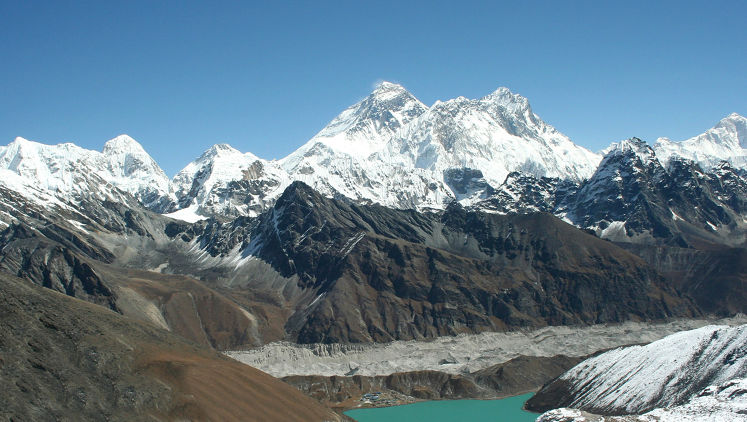
Everest Base Camp Trek – Conquering the Hardest Trekking Experience
Introduction
The Everest Base Camp Trek stands as a testament to the indomitable spirit of adventure-seekers and nature enthusiasts who aim to conquer one of the world’s most challenging treks. Situated in the heart of the towering Himalayas, this trek offers breathtaking landscapes, cultural insights, and an ultimate test of physical and mental endurance. Often touted as the “hardest trekking experience,” the Everest Base Camp Trek presents a journey that demands preparation, determination, and a deep connection with nature.
The Path Less Traveled
The Everest Base Camp Trek spans over 130 kilometers (80 miles) round-trip, taking trekkers through rugged terrain, steep ascents, and varying weather conditions. The journey starts in Lukla, Nepal, and progresses through picturesque Sherpa villages, dense forests, icy rivers, and high-altitude plateaus. Trekkers experience a range of altitudes, from Lukla’s 2,800 meters to the dizzying heights of Everest Base Camp at 5,364 meters (17,598 feet) above sea level. This significant altitude gain, coupled with the thinning oxygen levels, is a primary factor contributing to the trek’s reputation as one of the toughest.
Physical Challenges and Acclimatization
One of the most formidable aspects of the Everest Base Camp Trek is the challenge posed by high altitude and its impact on the human body. Altitude sickness, a potentially life-threatening condition, becomes a genuine concern as trekkers ascend to higher altitudes without proper acclimatization. Acclimatization days are strategically built into the trek, allowing the body to adapt to reduced oxygen levels. These rest days play a crucial role in minimizing the risk of altitude-related illnesses.
Despite these precautions, trekkers often experience symptoms such as shortness of breath, fatigue, headaches, and nausea as they approach higher altitudes. The journey tests both physical fitness and mental determination, demanding a careful balance between pushing one’s limits and heeding the body’s warning signs.
Weather Woes
The Everest region experiences unpredictable and harsh weather conditions that further intensify the difficulty of the trek. Trekkers encounter extreme temperature fluctuations, ranging from sweltering heat in the lower regions to bone-chilling cold at higher elevations. Sudden snowstorms, high winds, and whiteout conditions can engulf the trail without warning, making navigation a daunting task.
The trek’s timing also plays a pivotal role in determining the severity of weather-related challenges. While the main trekking seasons (spring and autumn) offer more stable weather conditions, even these periods are not immune to rapid changes in weather. Trekkers must be prepared for all eventualities and equipped with proper clothing and gear to brave the elements.
Cultural Immersion and Mental Resilience
The Everest Base Camp Trek is not just a test of physical prowess; it’s also an opportunity for cultural immersion and mental resilience. The trek takes trekkers through Sherpa villages, where they can engage with local communities and witness their unique way of life. The vibrant monasteries, prayer flags, and intricately carved mani walls add spiritual depth to the journey, reminding trekkers of the region’s rich cultural heritage.
Mental strength becomes a critical factor as trekkers face both physical challenges and the emotional highs and lows that come with the journey. Long days of walking, the monotony of the trail, and the uncertainty of weather conditions can take a toll on one’s spirit. Overcoming these mental barriers is as important as conquering the physical obstacles, and trekkers often find themselves drawing inspiration from the majestic surroundings and the camaraderie of fellow trekkers.
The Rewarding Summit and Beyond
Reaching Everest Base Camp is a triumphant moment that rewards trekkers with awe-inspiring views of the Khumbu Icefall and the towering peaks of the Himalayan range, including the majestic Everest itself. The sense of accomplishment is unparalleled, serving as a testament to the determination and grit required to conquer this arduous journey.
While reaching Everest Base Camp is a remarkable achievement, it’s only half the trek. The journey back to Lukla presents its own set of challenges, as trekkers navigate the descent while their bodies continue to battle altitude-related stresses. The sense of accomplishment, however, serves as a constant motivator, reminding trekkers that they have conquered one of the world’s hardest trekking experiences.
Conclusion
The Everest Base Camp Trek is a crucible of physical endurance, mental resilience, and cultural exploration. It challenges trekkers to push beyond their limits, navigate through unforgiving terrain, and adapt to the whims of nature. Despite its reputation as the “hardest trekking experience,” the journey offers unparalleled rewards in the form of breathtaking vistas, cultural immersion, and an unbreakable connection with nature. For those who dare to embark on this epic adventure, the Everest Base Camp Trek remains a life-defining experience that forever changes the way they view challenges and triumphs.









